The Hazards of New Technology
By Julia Elton
I am currently locked down at Clevedon Court, our family house in Somerset, with my brother and my nephew (who do all the cooking!). One of the many things I’ve been able to get on with now I have so much time is continuing the long task of transcribing the diaries of my great-great grandfather, Sir Arthur Elton (1819-1883). They throw up a lot of interesting things about the difficulties of introducing modern conveniences to an enormous mediaeval house and I thought this entry in particular might amuse you all.
To my sincere relief the gas leak had been discovered, a hole in the tube… In the afternoon experienced a serious alarm from fire. Rachel [the housemaid] found a smell of gas in my dressing room and poked about a lighted match to find out the leak.
The gas was escaping from a hole in a pipe under the floor! It took fire and when I ran up, on being summoned, I found the wood board burning. Word had been sent to turn off the main, but there was delay, and the flame burst out 2 or 3 times after being quenched by the water flung by the maids. Sent for Andrews [local carpenter] to bring his tools to break up the floor & get at the flame. The flame went out thanks to main being at last turned off and the jugs of water but for 3 or 4 minutes I felt alarmed and quite in a dream. Andrews slowly arrived, tool bag in hand, when all was over. The flooring was only a little charred, but the sight of the smoke had been most unpleasant. A new gas stove had been recently fixed, and the gas fitter had unduly as I conceive twisted the gas pipe and burst it. The hole was big enough to admit a pencil, I should say. Rachel was thoroughly frightened, and will not again search for gas leaks with a light.
Earlier on in the diary, he mentions ordering gas lamps and pendants from the famous Birmingham firm of Hardman & Co., metalwork designers and manufacturers. Here is a photograph of the Great Hall in about 1870 with the Hardman gas pendant (Gasolier).

Some years ago Geoff Wallis restored for me some of the Hardman gas lamps, which had been lurking in an attic. Once he’d finished, he brought over a gas canister and we lit one in front of an audience of Newcomen Society members.
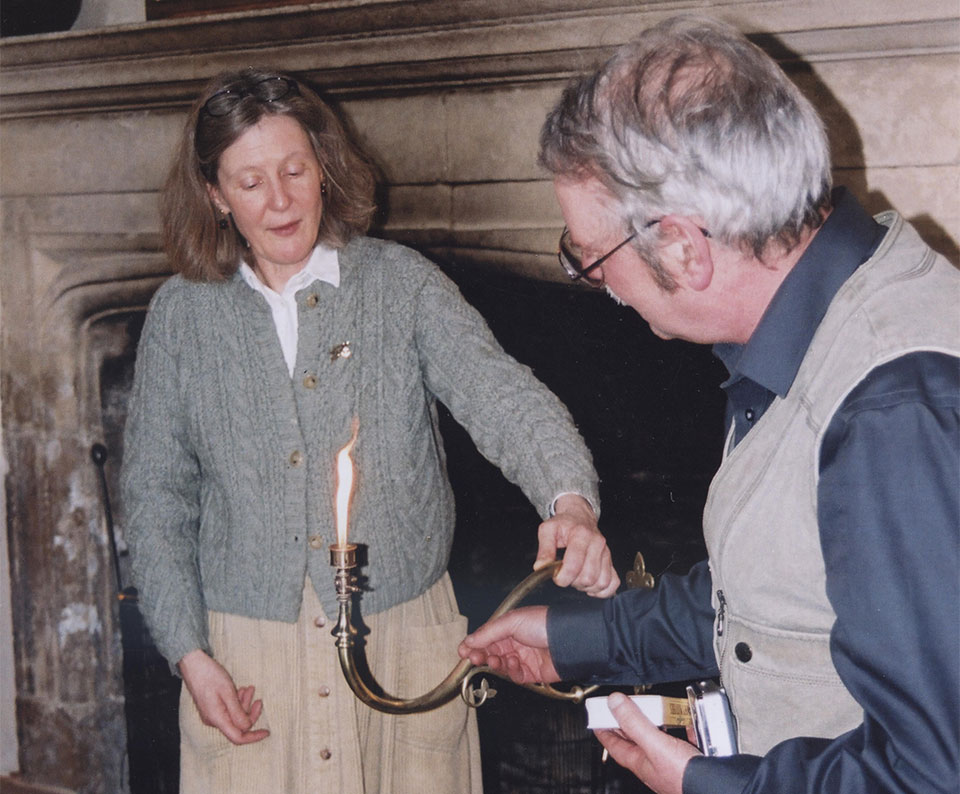
Here is a picture of the lamp with its globe in its original position in the old Drawing Room, again about 1870
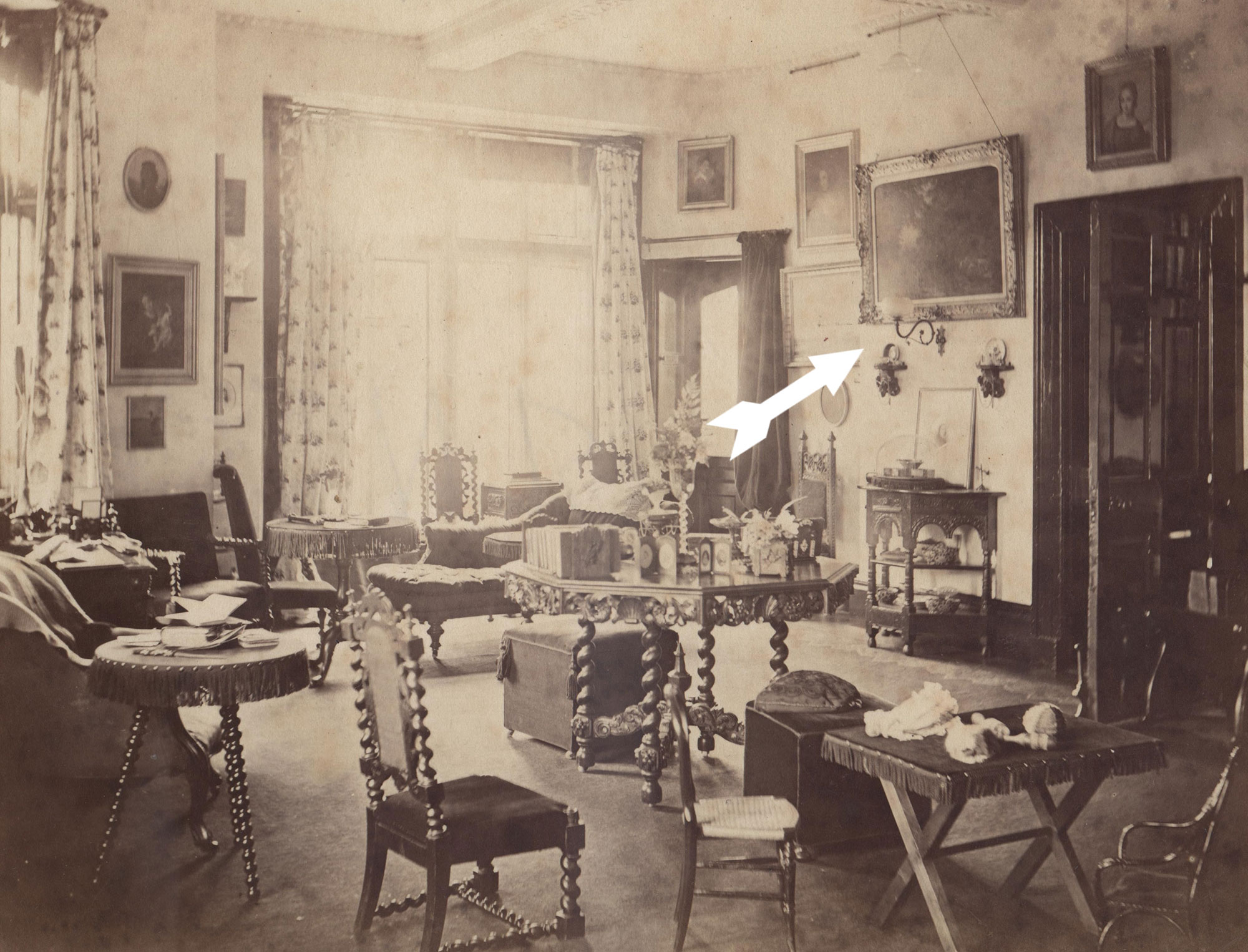
Slightly later on, my great-great grandfather put in a gas bath. Although I don’t know the exact date (haven’t got far enough with the diaries), the bath itself still exists at Blaise Castle Museum. (see below)
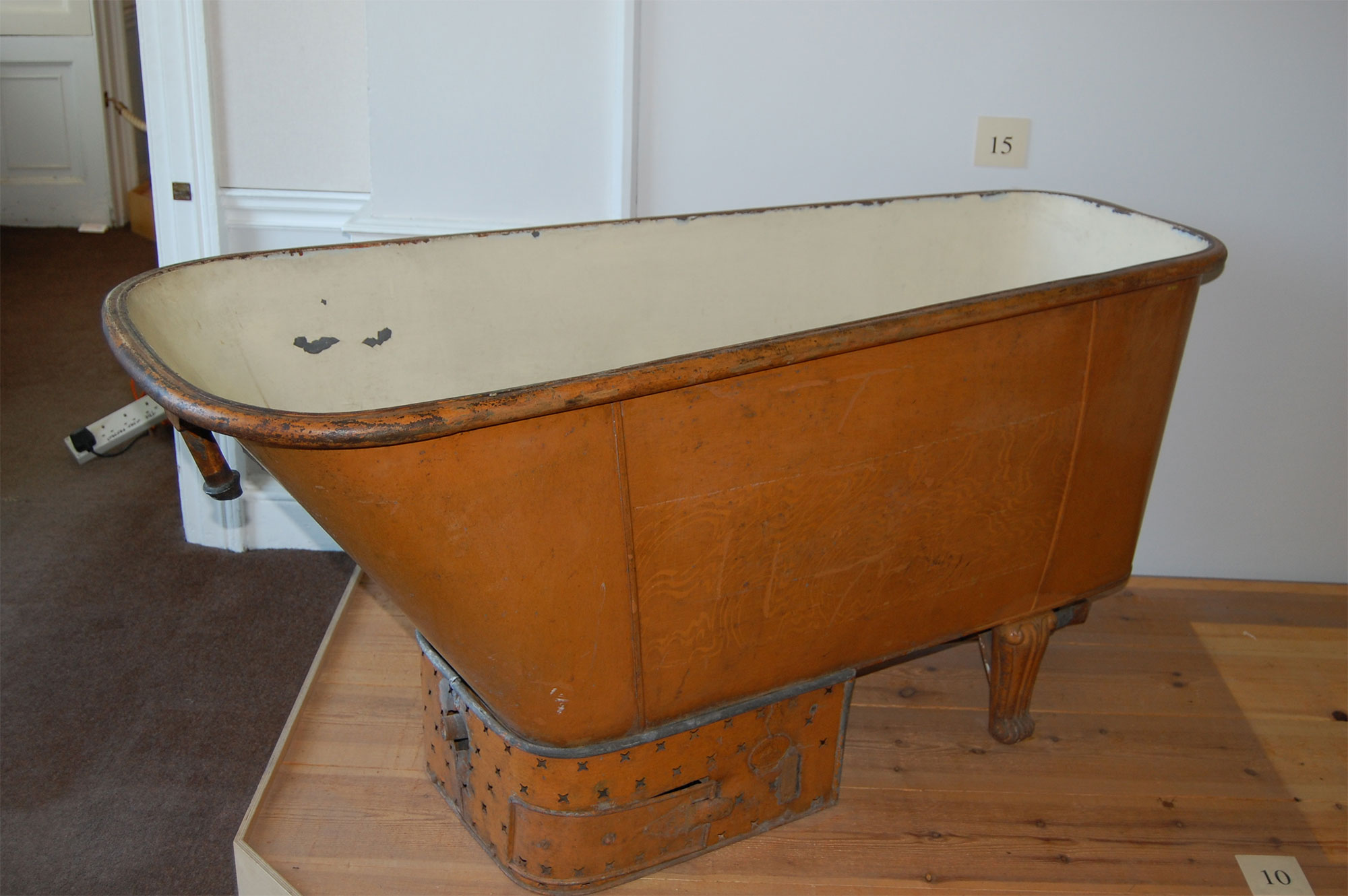

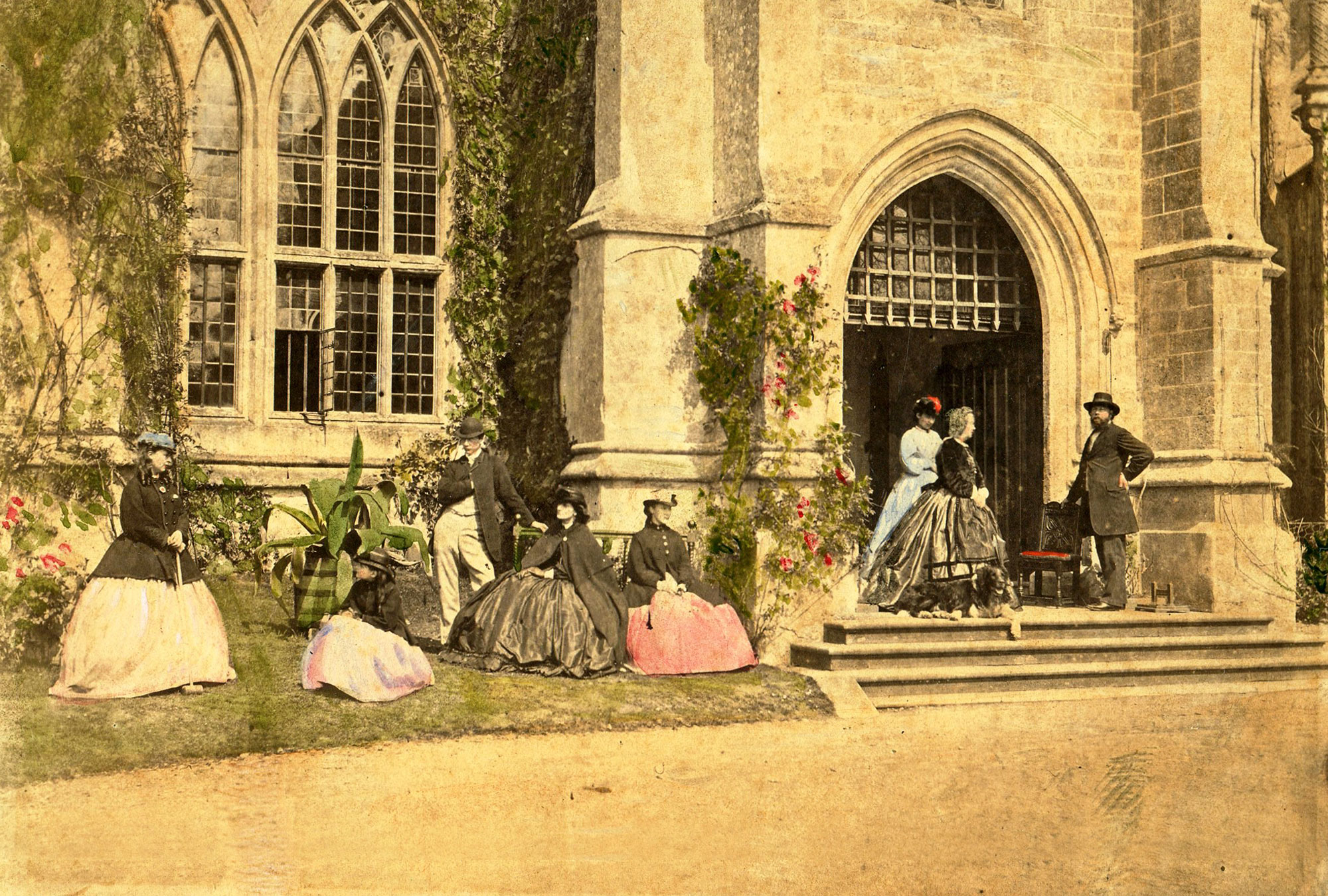
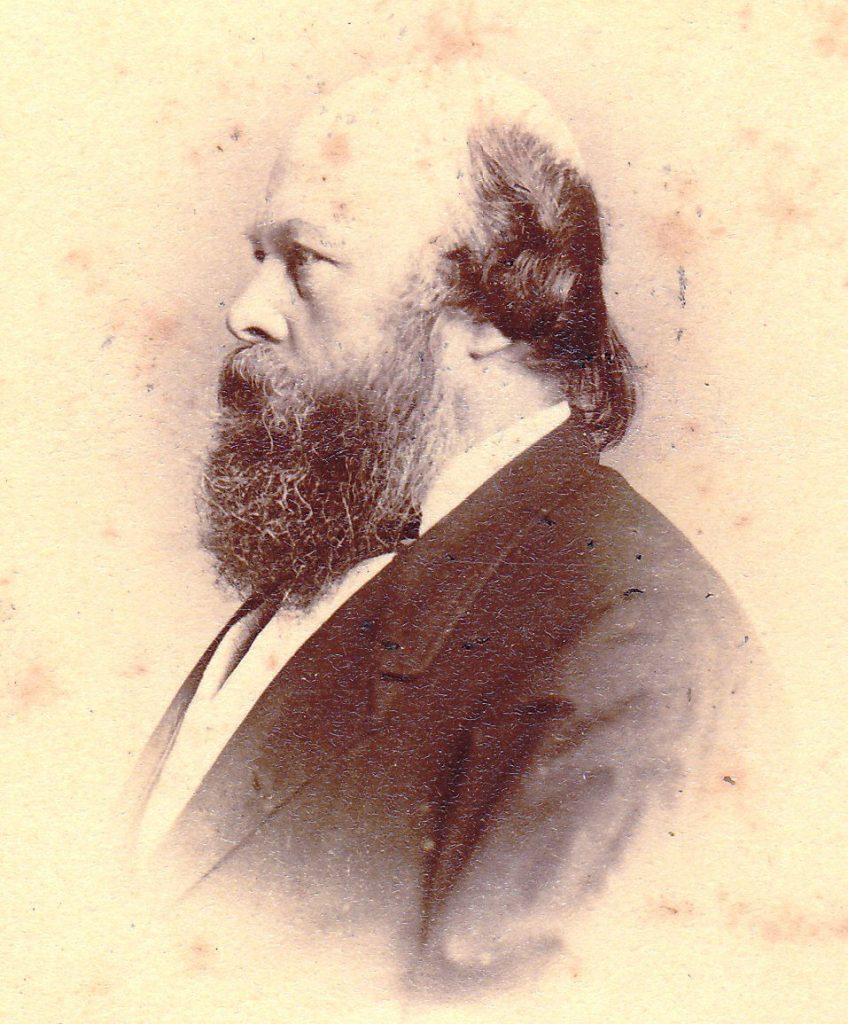
Lovely insight into the perils of hiding the utilities away. Also, gas lighting was not exactly all that novel by the 1870s. I am a little surprised that even a relatively ill-educated maid might not have known that searching with a match was a bad idea!
Did the house have a gas main from the local town gas supply or did it make its own?
Round about 1851 my great-great grandfather began to make noises about having a gas works in Clevedon. The Clevedon Gas Works was eventually established in 1856 and its first engineer was W.S. Stears, formerly of the Crystal Palace Gas Co. As shareholders naturally my family took its supply from the town gasworks like everyone else.
Low Wood Hall in Nether Wasdale had a gasolier last time I stayed there (probably 20+ years ago). I seem to think it had it’s own gas works.
I’ve had lots of comments from Clevedon friends of mine. Richard Pring writes: My mother used to check for gas leaks the same way. I remember smelling gas in the kitchen of our house in Brislington. A lead gas pipe ran along near the ceiling on one wall and mother found the leak by going along the pipe with a lighted match until a flame jetted from a small hole. She then extinguished the flame and squeezed the lead around the puncture with a pair of pliers. Job done.
I know of at least one example of a household gas generator in Ireland, long abandoned.
It would be rather fun to collate all the examples of private gas-works. I once had an architect boyfriend who converted the gas-holder in some grand country pile into a charming, circular dining room. Wish I could remember the name of the house, though I was taken to see it.
Clevedon Gasworks used to have a small fleet of eight plank coal wagons, which were painted in light grey with white lettering, the Weston Clevedon & Portishead Railway served the Gas Works, via a spur from its main line.
After the W C & P R closed in 1940, the Great Western carried on serving the gas works from a connection from its terminus in Clevedon.
The conversion of gas holders to domestic and retail space continues…https://www.wilkinsoneyre.com/projects/gasholders-london
Um – like the gas bath – the Bow Gas Museum had one with a terrifying row of jets underneath it. I do remember seeing a gas iron – used by a friend’s mother at a remote Kent farm.-three or four jets alight right under the handle.
But ….. rather than write this I ought to be writing up the early use of slot meters in South London ………………………
I’m not surprised that Andrews arrived slowly. He seems to have been the wisest of the bunch.